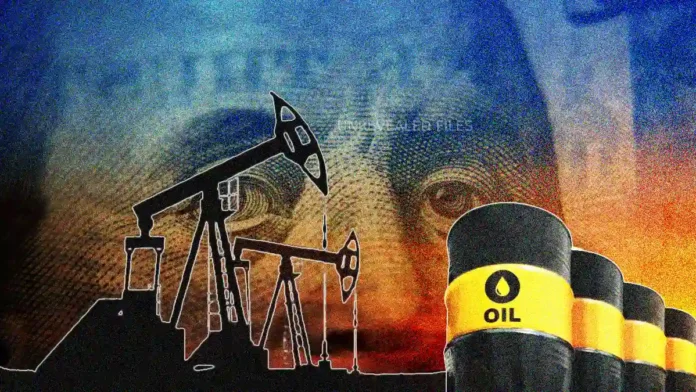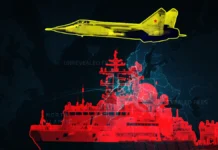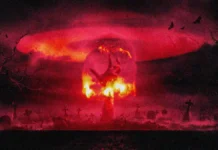If you want to understand modern geopolitics, forget the headlines about wars, leaders, and diplomatic summits. Follow the oil, and the currency it’s priced in. For over half a century, that currency has been the U.S. dollar. This arrangement, known as the Petrodollar system, has done more to cement American power than any aircraft carrier or military base. And yet, it is rarely discussed openly in mainstream discourse. Perhaps because acknowledging it means admitting that the very architecture of global trade was designed with one nation’s dominance in mind.
In geopolitics, the dollar is something far more potent: a weapon, forged in the oil fields of the Middle East and wielded in the halls of power in Washington.
In the chaos of the 1970s oil shocks, the Petrodollar system transformed America’s currency from a mere medium of exchange into the bloodstream of global trade. It ensured that no matter where oil flowed, from the deserts of Saudi Arabia to the ports of Tokyo, the U.S. dollar was the toll you had to pay.
And here’s the twist: this wasn’t just about economics. It was about control. Whoever controls the currency of energy trade controls the global financial order and, by extension, the levers of political power.
Contents
Birth of the Petrodollar system
The story begins in the early 1970s, a time when the U.S. was in trouble. The Vietnam War was draining its treasury, inflation was rising, and in 1971, President Richard Nixon stunned the world by ending the dollar’s convertibility to gold, effectively killing the Bretton Woods system. Without gold backing, the dollar needed a new anchor.
That anchor came in the form of oil. In 1974, the U.S. struck a secretive yet historic deal with Saudi Arabia: in exchange for American military protection and arms sales, the Saudis and, by extension, OPEC, would price all oil exports exclusively in U.S. dollars. Any country, whether an ally or an adversary, would first need to obtain dollars to purchase oil.
It was a masterstroke. The dollar was no longer tied to gold; it was tied to energy, the lifeblood of modern civilization.
How the U.S. Dollar Became a Geopolitical Weapon
Critics might ask: Why should a U.S.–Saudi agreement affect countries with no direct oil ties to Riyadh? The answer lies in how markets work. Once OPEC priced oil in dollars, everyone followed. Even non-OPEC producers found it easier to sell oil in USD because it became the global benchmark. It’s not just about who directly buys from Saudi Arabia or OPEC; the effect is global because of how oil markets, trade settlements, and currency reserves work.
Step-by-Step Breakdown of Why Countries Are Affected
1. Oil is a universal necessity
- Oil isn’t just fuel, it’s the lifeblood of modern economies (transport, industry, agriculture, plastics, shipping).
- Every country, even if it doesn’t buy directly from Saudi Arabia or OPEC, still needs oil from somewhere.
- Because OPEC was the dominant supplier in the 1970s, its pricing policy became the global standard.
2. Dollar-only pricing became the default
- The U.S.–Saudi deal meant all OPEC oil was priced in USD, no exceptions.
- Even if a country bought oil from Mexico, Norway, or Russia, those sellers often priced it in USD too, because that was the global benchmark.
- This meant any country that wanted oil first had to get USD.
3. Global demand for USD skyrocketed
To buy oil, countries needed USD → they had to:
- Sell their currency for dollars.
- Export goods/services to earn dollars.
- Keep dollar reserves in their central banks.
This created a constant, guaranteed demand for the U.S. dollar in all economies, not just oil-importing ones, because global trade linked them all together.
4. The “network effect” of the dollar
Once, the USD was the oil currency:
- Other commodities (gas, metals, wheat) started being priced in USD.
- Many global trade contracts, even for non-oil goods, were settled in USD.
- Countries began pegging their currencies to the dollar for stability.
- The U.S. gained the “exorbitant privilege” of printing the currency that the world had to use.
5. How does it affect every country
Even if a country is oil self-sufficient:
- It trades with countries that aren’t → those partners need USD.
- Its currency stability partly depends on the USD exchange rates.
- The global banking system (SWIFT, IMF, World Bank) became dollar-centric.
In other words:
The Petrodollar system didn’t just make oil transactions dollar-based; it made the entire global economy dollar-centric.
From that point on:
- Nations had to earn or buy dollars to secure energy supplies.
- To earn dollars, they had to export goods and services to the U.S. or to other nations that already held dollars.
- Central banks began stockpiling USD reserves to stabilize exchange rates and guarantee access to oil.
It was a self-reinforcing loop. The world needed oil, oil needed dollars, and dollars flowed back into the U.S. economy, funding its deficits and fueling its military-industrial complex.
The Weaponization of the Dollar
The genius and the danger of the Petrodollar system is that it transformed America’s currency into a geopolitical weapon.
Consider how U.S. sanctions work today:
- A sanctioned country can be cut off from the SWIFT international payments system, which is dollar-dominated.
- Even if a country trades with a third party, banks fear U.S. penalties for dealing in dollars with sanctioned entities.
- Vital commodities like oil, gas, and metals become inaccessible without going through the dollar choke point.
From Iran to Venezuela to Russia, nations have felt the sharp edge of this financial blade. Unlike military interventions, which are costly and risky, currency-based coercion can be deployed quietly, swiftly, and globally.
The U.S.’s Hidden Advantage
Most countries must earn the currency they spend abroad. The U.S. simply prints it. And the global demand for USD remains high, allowing Washington to:
- Run enormous trade deficits without collapsing its currency.
- Finance its military reach without crippling domestic inflation (most of the time).
- Influence foreign economies by controlling liquidity in the world’s most traded currency.
It is the modern version of tribute, except the tribute is paid in dollars willingly, and often unknowingly.
Backlash in this Monopoly
But no monopoly lasts forever. The Petrodollar’s dominance is now under threat from multiple fronts:
- Russia is trading oil in rubles and yuan with friendly nations.
- China is pushing for yuan-based oil contracts via the Shanghai Petroleum and Natural Gas Exchange.
- Iran and Venezuela already operate outside the dollar system, out of necessity.
- Saudi Arabia, the very architect of the system, has openly discussed accepting non-dollar payments for oil.
And then there’s BRICS, an economic bloc now representing a larger share of global GDP (PPP) than the G7. Its members are actively exploring ways to conduct trade without touching the dollar, a move that, if successful, could reshape the world’s financial map.
The Future: Can the Dollar Hold the Throne?
The Petrodollar has survived oil shocks, wars, and financial crises. But its real enemy may be the very multipolar world that is now emerging. If enough nations find reliable, trusted alternatives, whether in the form of a BRICS currency, gold-backed trade units, or bilateral deals, the U.S. dollar’s stranglehold could weaken.
The consequences would be profound:
- The U.S. could face higher borrowing costs as global demand for treasuries drops.
- Sanctions would lose much of their bite.
- Economic power would become more dispersed, and possibly more unstable.
Conclusion
For decades, the Petrodollar has been the quiet foundation of U.S. supremacy. But what happens when the world decides it no longer wants to play by America’s rules? Can a nation built on the privilege of printing the world’s money adapt to a world where that privilege is gone? Or will it fight economically, politically, perhaps even militarily to keep the dollar’s crown?
History suggests that reserve currencies rarely fade away peacefully. The Petrodollar was born out of a crisis. If it dies, it may be in the middle of another.
Also Read: North Korea Arms Russia: A Mirror to Global Proxy Warfare
Sources
- Tran, Hung. Is the End of the Petrodollar Near? Atlantic Council, revised edition, Atlantic Council, 2024.
- “How Petrodollars Affect the U.S. Dollar.” Investopedia, 30 July 2015.
- “Petrodollars: Definition, History, Uses.” Investopedia, 11 Feb. 2004.
- “The Petrodollar – The U.S.–Saudi Deal That Ruined the World.” CounterPunch, 10 Mar. 2025.
- “Reports of the Petrodollar System’s Demise Are ‘Fake News’ — Here’s Why.” MarketWatch, 15 June 2024.
- “Petrocurrency.” Wikipedia, updated recently.
- “Nixon Shock.” Wikipedia, updated recently.
- “Oil Embargo, 1973–1974.” Office of the Historian, U.S. Department of State.
FACT CHECK: We strive for accuracy and fairness. But if you see something that doesn’t look right, please Contact us.
DISCLOSURE: This Article may contain affiliate links and Sponsored ads, to know more please read our Privacy Policy.
Stay Updated: Follow our WhatsApp Channel and Telegram Channel.












